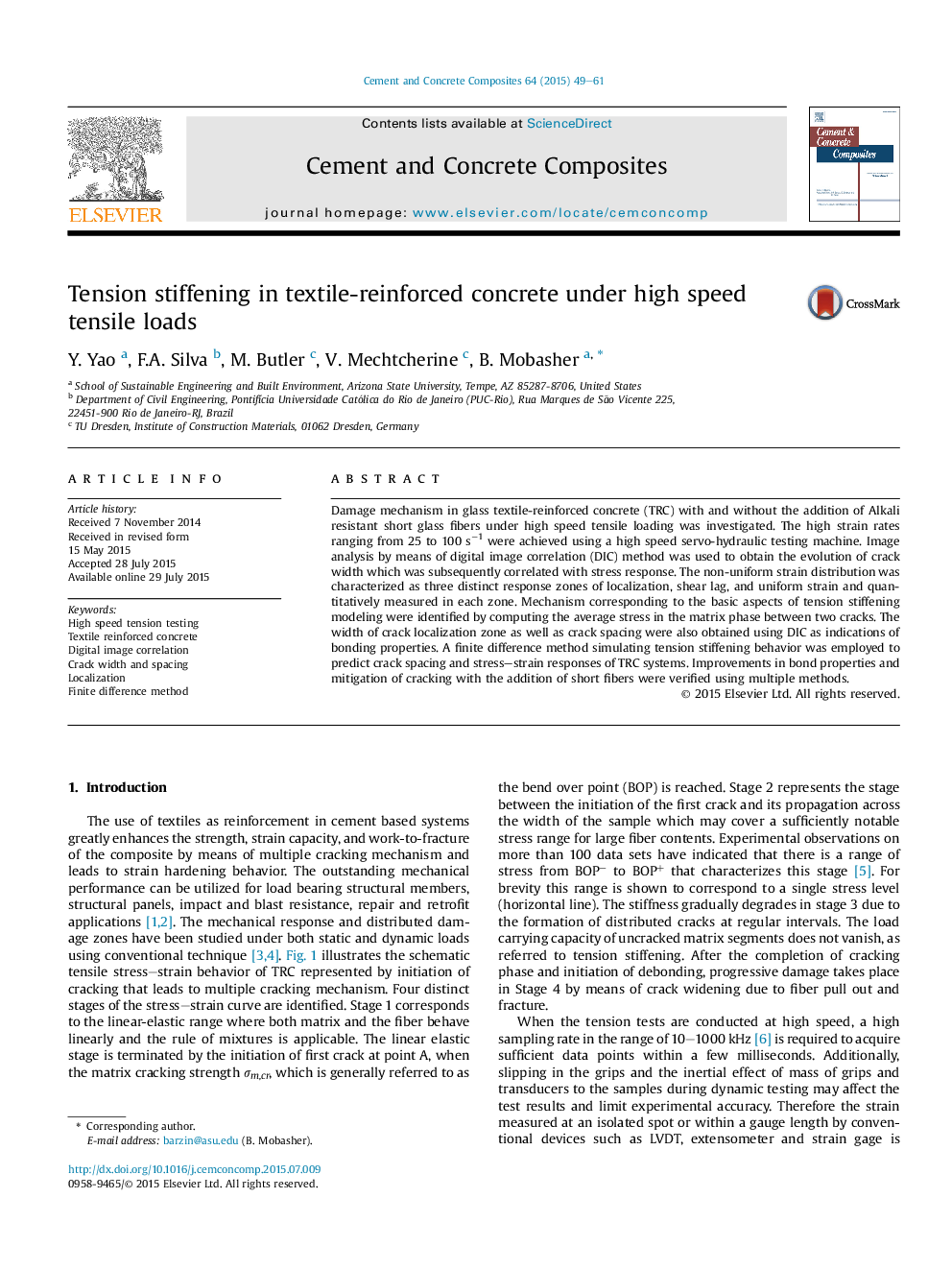| Article ID | Journal | Published Year | Pages | File Type |
|---|---|---|---|---|
| 1454442 | Cement and Concrete Composites | 2015 | 13 Pages |
Damage mechanism in glass textile-reinforced concrete (TRC) with and without the addition of Alkali resistant short glass fibers under high speed tensile loading was investigated. The high strain rates ranging from 25 to 100 s−1 were achieved using a high speed servo-hydraulic testing machine. Image analysis by means of digital image correlation (DIC) method was used to obtain the evolution of crack width which was subsequently correlated with stress response. The non-uniform strain distribution was characterized as three distinct response zones of localization, shear lag, and uniform strain and quantitatively measured in each zone. Mechanism corresponding to the basic aspects of tension stiffening modeling were identified by computing the average stress in the matrix phase between two cracks. The width of crack localization zone as well as crack spacing were also obtained using DIC as indications of bonding properties. A finite difference method simulating tension stiffening behavior was employed to predict crack spacing and stress–strain responses of TRC systems. Improvements in bond properties and mitigation of cracking with the addition of short fibers were verified using multiple methods.
